DID YOU KNOW?
Everything you wanted to know about noodles, and more.
Noodles have a rich history dating back to the early 3rd century A.D. This tradition first began in China with small hand-pulled pieces of dough thrown into a wok of boiling water. Called mian pian, this kind of noodle is still eaten in China. However, despite largely being known as the pioneers of noodle making, China hasn’t had an easy claim to the crown. The Italians have long argued that they’re the true inventors of the noodle, with the invention of pasta.


Noodles have a rich history dating back to the early 3rd century A.D. This tradition first began in China with small hand-pulled pieces of dough thrown into a wok of boiling water. Called mian pian, this kind of noodle is still eaten in China. However, despite largely being known as the pioneers of noodle making, China hasn’t had an easy claim to the crown. The Italians have long argued that they’re the true inventors of the noodle, with the invention of pasta.
There are fresh noodles and there are dried ones too. But both need to be cooked, whether you choose to boil, braise, stir-fry, or deep-fry them. However, instant noodles are noodles that’re precooked before being packed and sold. That’s why they take just two or three minutes to cook, allowing you to save lots of preparation time. This makes instant noodles a fast, convenient, and substantial meal anytime, anywhere.

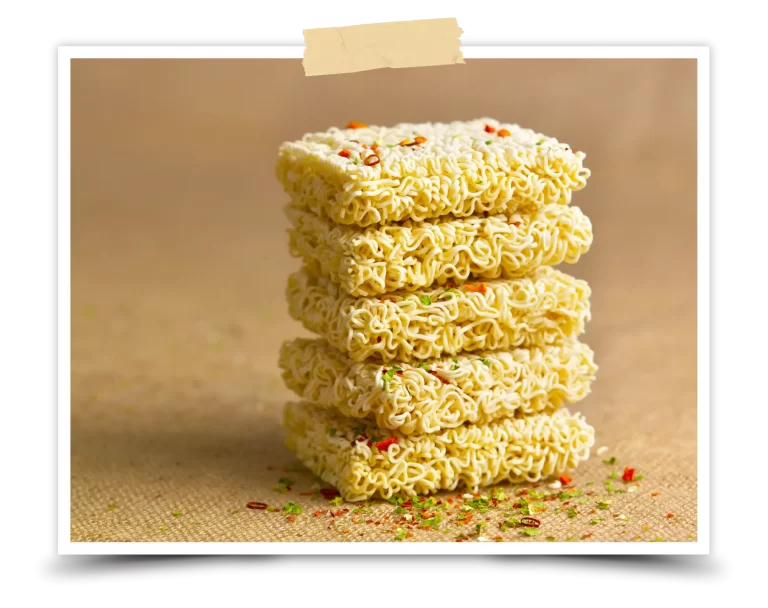
There are fresh noodles and there are dried ones too. But both need to be cooked, whether you choose to boil, braise, stir-fry, or deep-fry them. However, instant noodles are noodles that’re precooked before being packed and sold. That’s why they take just two or three minutes to cook, allowing you to save lots of preparation time. This makes instant noodles a fast, convenient, and substantial meal anytime, anywhere.
Are you ready for this? More than 100 different kinds of noodles are produced in Asia! It’s all thanks to the fact that Asians love their noodles with a vengeance. With a myriad of varieties hailing from China, Japan, Thailand, Vietnam, and the Philippines, you’re looking at an endless list made from an equally extensive variety of ingredients.
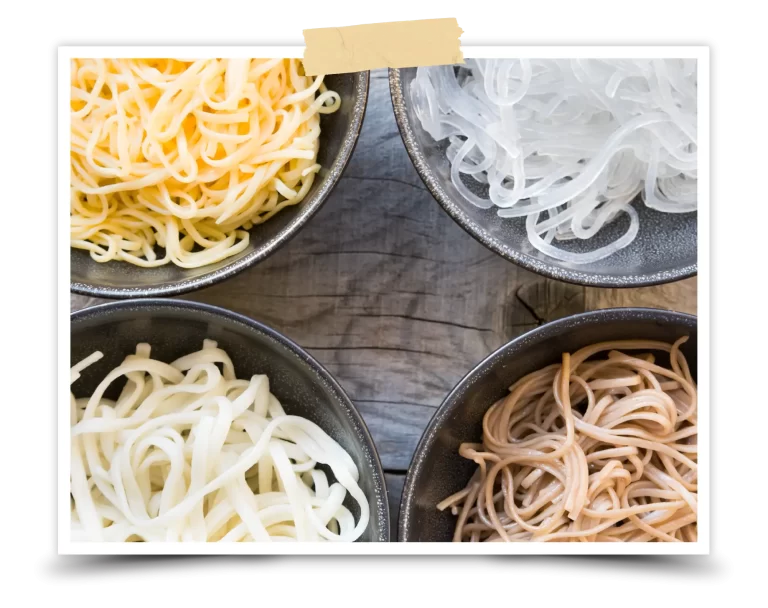
CHINESE EGG NOODLES
Chinese egg noodles are the star of popular Asian dishes, including char siew wantan mee – a well-loved noodle served with roasted honey pork slices and meat dumplings; and chow mien – a Cantonese-style noodle stir-fried with succulent seafood or pork slices and vegetables.
RICE NOODLES
Rice noodles are flat, white noodles made from rice flour. They’re naturally gluten-free and popular for their silky softness when cooked.
GLASS NOODLES
Glass noodles are made of mung bean, or green pea flour, and have a lovely gelatinous texture. These opaque dried noodles are called so because they magically become translucent when cooked.
SOBA
Soba are buckwheat noodles native to Japan. They’re traditionally cooked and eaten on New Year’s Eve as a symbol of longevity.
UDON
Udon are the thickest type of Japanese noodles available. In order to achieve their characteristic chewiness, it’s not uncommon for udon makers to knead the stiff dough with their feet!

Are you ready for this? More than 100 different kinds of noodles are produced in Asia! It’s all thanks to the fact that Asians love their noodles with a vengeance. With a myriad of varieties hailing from China, Japan, Thailand, Vietnam, and the Philippines, you’re looking at an endless list made from an equally extensive variety of ingredients.
CHINESE EGG NOODLES
Chinese egg noodles are the star of popular Asian dishes, including char siew wantan mee – a well-loved noodle served with roasted honey pork slices and meat dumplings; and chow mien – a Cantonese-style noodle stir-fried with succulent seafood or pork slices and vegetables.
RICE NOODLES
Rice noodles are flat, white noodles made from rice flour. They’re naturally gluten-free and popular for their silky softness when cooked.
GLASS NOODLES
Glass noodles are made of mung bean, or green pea flour, and have a lovely gelatinous texture. These opaque dried noodles are called so because they magically become translucent when cooked.
SOBA
Soba are buckwheat noodles native to Japan. They’re traditionally cooked and eaten on New Year’s Eve as a symbol of longevity.
UDON
Udon are the thickest type of Japanese noodles available. In order to achieve their characteristic chewiness, it’s not uncommon for udon makers to knead the stiff dough with their feet!
Noodle and pasta lovers will notice fundamental differences that make noodles and pasta unique in their own ways – even if they do share some similarities. All these differences in textures and flavours mean that you can’t simply substitute Italian pasta for an Asian noodle. But maybe that’s not such a bad thing, as it also means that noodle lovers have more varieties to enjoy!
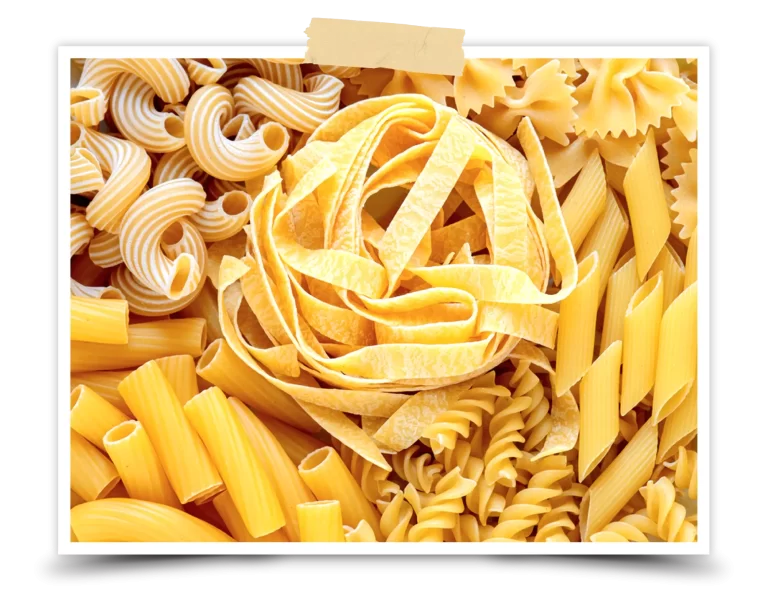
PASTA
For one, the secret to good pasta is that it should be cooked al dente (‘firm to the bite’). Secondly, all pastas are made from the same type of wheat – durum wheat. (Vegetable purees or powder, however, are sometimes added for extra colour and nutrition.)
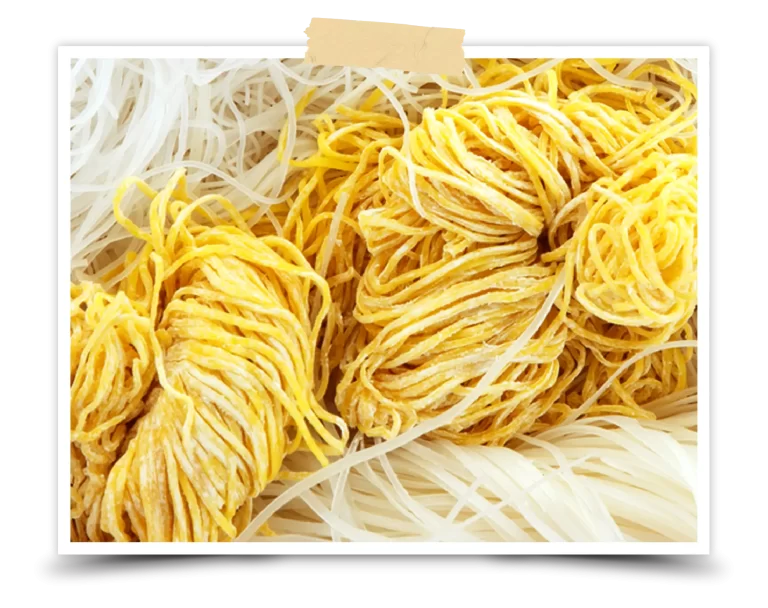
NOODLES
Noodles, on the other hand, have a lot more room to be different. Some are cooked soft, while others are meant to have a firm bite. Some are plain chewy, while others – like ramen – have a more springy resistance to the bite. Noodles, unlike their pasta cousins, are also often made from an array of grains, even root vegetables. Rice flour, yam or mung bean starch, soya bean, and wheat flour are just some of the examples. Meanwhile, other ingredients like egg, lye or cereal are sometimes included to alter the flavour and colour of the noodles.
Noodle and pasta lovers will notice fundamental differences that make noodles and pasta unique in their own ways – even if they do share some similarities. All these differences in textures and flavours mean that you can’t simply substitute Italian pasta for an Asian noodle. But maybe that’s not such a bad thing, as it also means that noodle lovers have more varieties to enjoy!

PASTA
For one, the secret to good pasta is that it should be cooked al dente (‘firm to the bite’). Secondly, all pastas are made from the same type of wheat – durum wheat. (Vegetable purees or powder, however, are sometimes added for extra colour and nutrition.)

NOODLES
Noodles, on the other hand, have a lot more room to be different. Some are cooked soft, while others are meant to have a firm bite. Some are plain chewy, while others – like ramen – have a more springy resistance to the bite. Noodles, unlike their pasta cousins, are also often made from an array of grains, even root vegetables. Rice flour, yam or mung bean starch, soya bean, and wheat flour are just some of the examples. Meanwhile, other ingredients like egg, lye or cereal are sometimes included to alter the flavour and colour of the noodles.
This one is obvious enough. Soup noodles are served in a bowl of soup, whereas dry ones are usually presented on plates or dishes seasoned with a little oil or paste. Dry noodles are generally stir-fried with meat, veggies or seafood, or simply tossed with the seasoning. Sometimes, you’ll find braised noodles in a coffee shop or a restaurant. These clay-pot cooked noodles come in thick gravy, making them neither dry nor very wet. But every noodle-lover will tell you that each has its own appeal.
When it comes to soupy noodles, the broth can make or break the dish. A good broth is something noodle fanatics will travel great distances to enjoy. Cooked with herbs and spices, it can make stars of any specialty noodle stalls that serve it. Long queues are often a good sign that a stall serves amazing noodles!

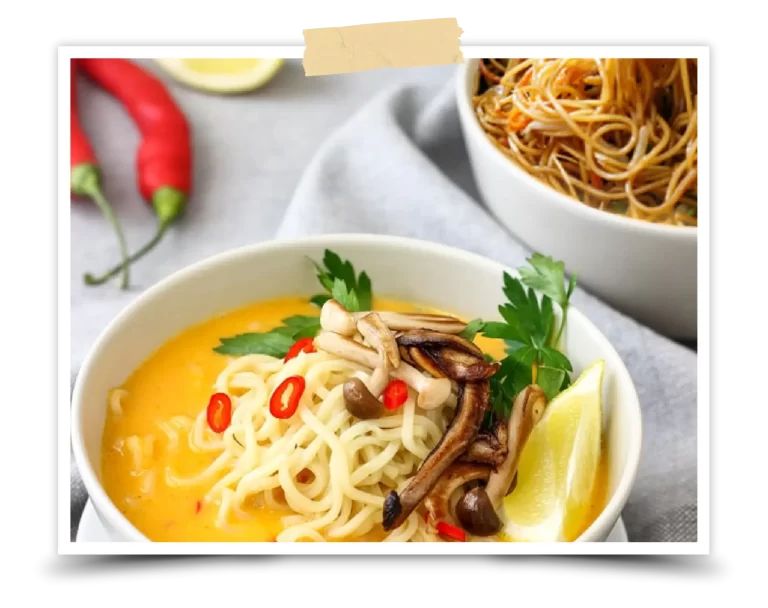
This one is obvious enough. Soup noodles are served in a bowl of soup, whereas dry ones are usually presented on plates or dishes seasoned with a little oil or paste. Dry noodles are generally stir-fried with meat, veggies or seafood, or simply tossed with the seasoning. Sometimes, you’ll find braised noodles in a coffee shop or a restaurant. These clay-pot cooked noodles come in thick gravy, making them neither dry nor very wet. But every noodle-lover will tell you that each has its own appeal.
When it comes to soupy noodles, the broth can make or break the dish. A good broth is something noodle fanatics will travel great distances to enjoy. Cooked with herbs and spices, it can make stars of any specialty noodle stalls that serve it. Long queues are often a good sign that a stall serves amazing noodles!
Anthocyanins are a type of compound that gives foods their rich purple hue and antioxidant properties. It can be naturally found in most purple food such as blueberries, cabbage, cauliflower, etc. In addition to acting as antioxidants and fighting off free radicals, anthocyanins are known to provide your body with a range of other anti-aging protections, including eyesight deterioration, memory problems, mood disorders, immune system etc!
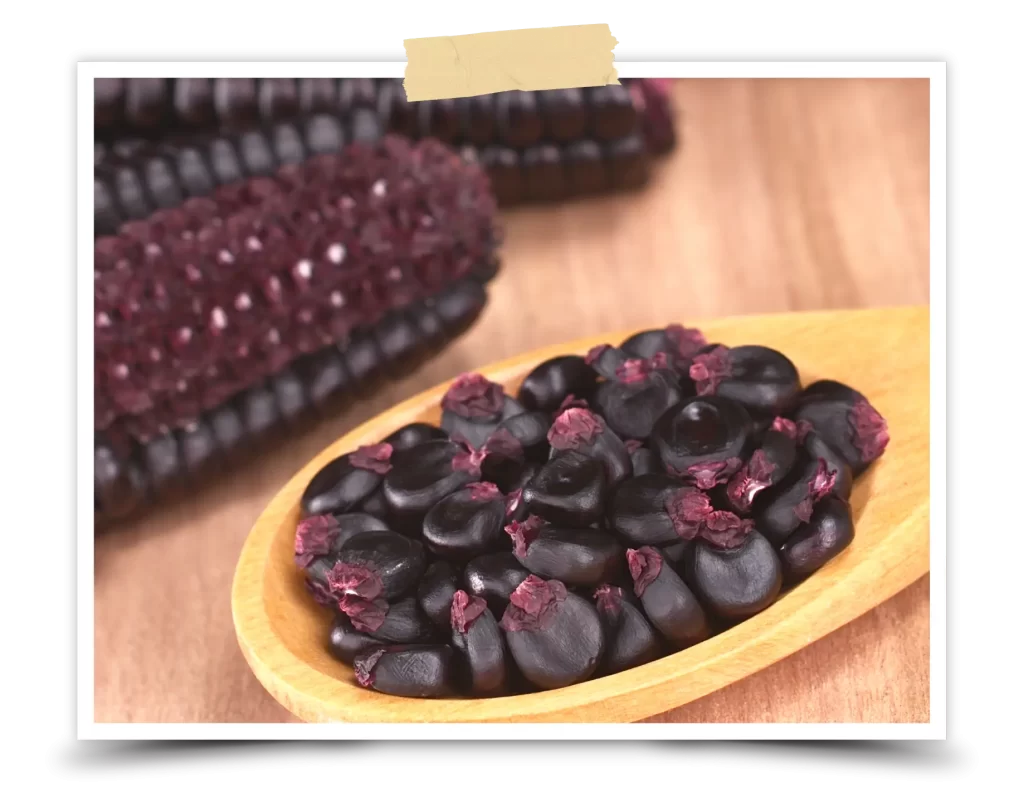
KOKA multigrain noodles with purple corn are set to delight noodle fans! Its luscious hue is due to the presence of Anthocyanins naturally found in the purple corn grain used, which is cultivated in the coastal area of Peru and has a high Anthocyanins content as many as 4 times that of blueberries! Scientists at the USDA have developed a rating scale that measures the antioxidant content of various plant foods, known as ORAC, which stands for Oxygen Radical Absorbance Capacity.
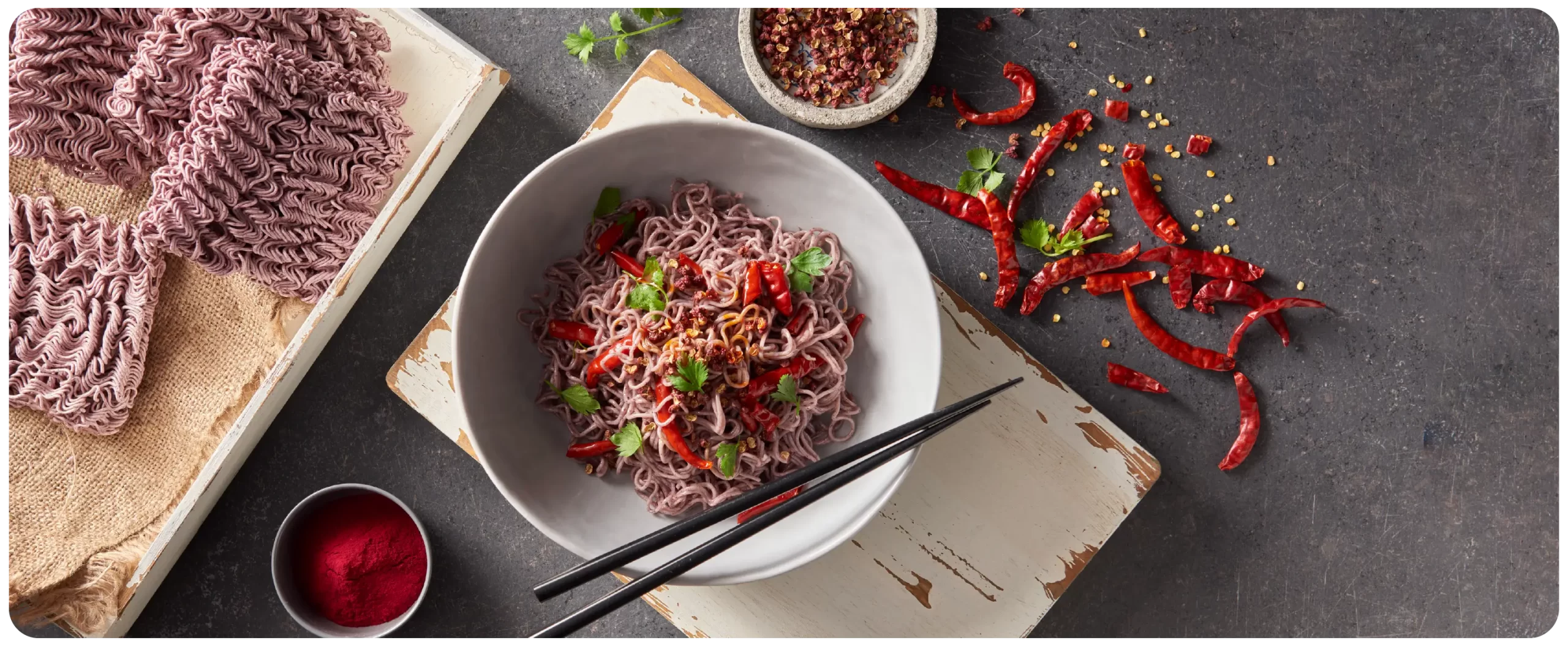
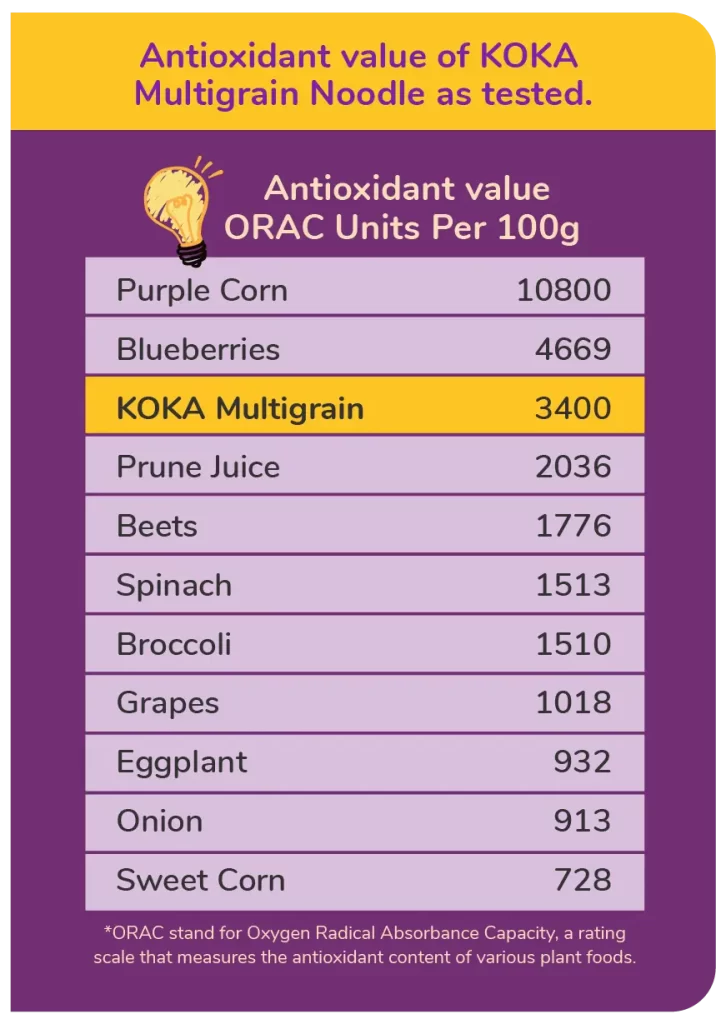
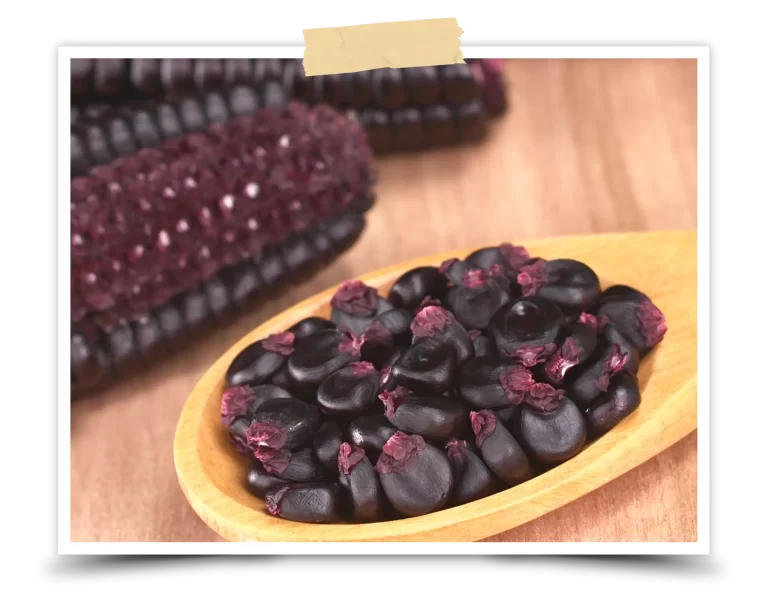
Anthocyanins are a type of compound that gives foods their rich purple hue and antioxidant properties. It can be naturally found in most purple food such as blueberries, cabbage, cauliflower, etc. In addition to acting as antioxidants and fighting off free radicals, anthocyanins are known to provide your body with a range of other anti-aging protections, including eyesight deterioration, memory problems, mood disorders, immune system etc!

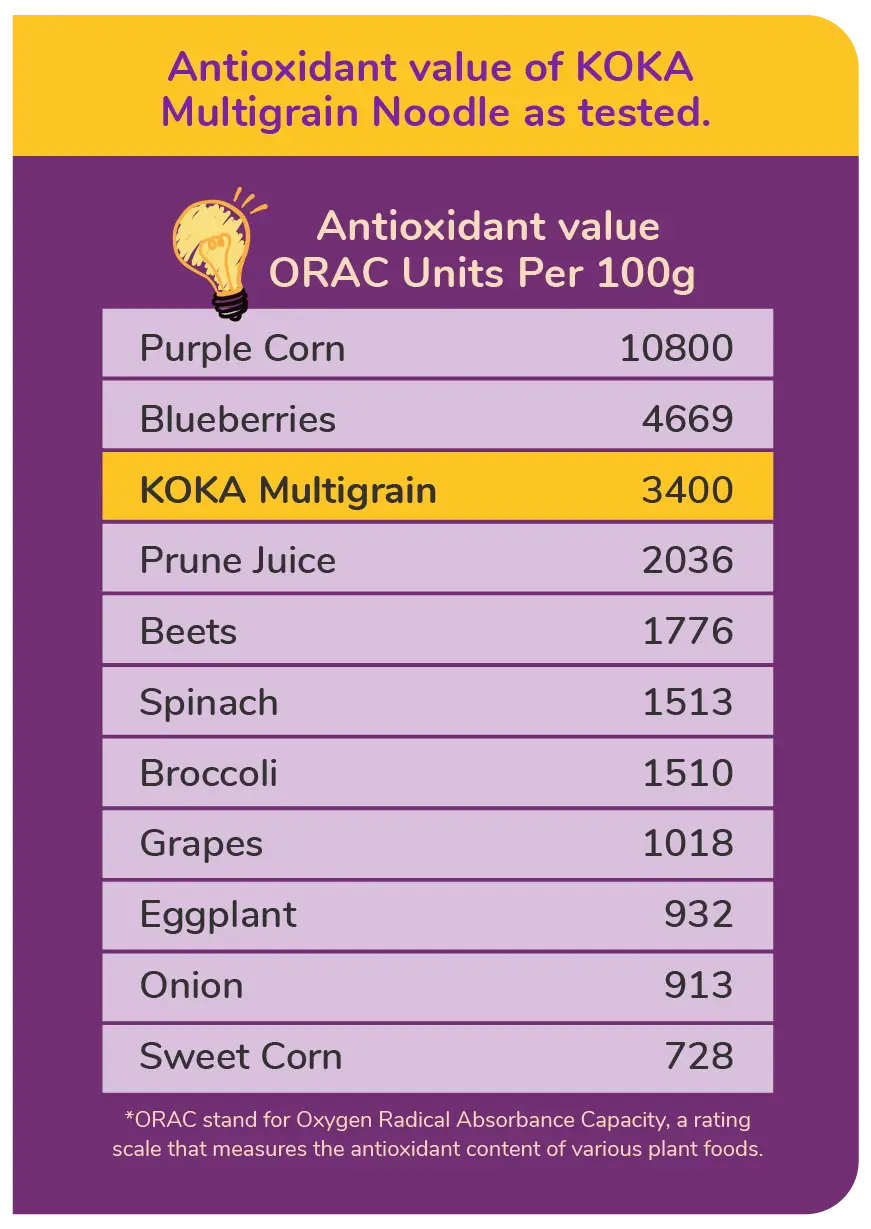

KOKA multigrain noodles with purple corn are set to delight noodle fans! Its luscious hue is due to the presence of Anthocyanins naturally found in the purple corn grain used, which is cultivated in the coastal area of Peru and has a high Anthocyanins content as many as 4 times that of blueberries! Scientists at the USDA have developed a rating scale that measures the antioxidant content of various plant foods, known as ORAC, which stands for Oxygen Radical Absorbance Capacity.
Here’s an interesting nugget: while Asia is home to the world’s largest instant noodles market, consumption worldwide has reached 100 billion servings per annum.
Can you imagine? More than 50 percent of the wheat consumption in the region goes into making these humble strands. Cup noodles now account for more than 60 percent of the instant noodle market. In fact, if you visit an Asian supermarket, you’ll notice that the instant noodle aisle is half-filled with these creations.
Many Asians choose instant noodles as the perfect mealtime option because they’re convenient, quick and easy to cook up, and they’re relatively cheap. Dried noodles can last a fairly long time without going bad, and most brands come with a huge array of flavours to choose from.
But perhaps best of all is that they’re highly customisable! You could add spring onions or fried shallots for that extra touch of flavour, or throw in your favourite vegetables and meats to turn your lunch or dinner into a wholesome meal. Or, you could spice it up with a dash of curry powder or dollop of sambal (a potent chili paste) for some added zing. In fact, you could stir-fry it, deep-fry it, bake it with cheese, or just keep it simple and savour it in a broth. It’s hard to get bored of eating instant noodles!
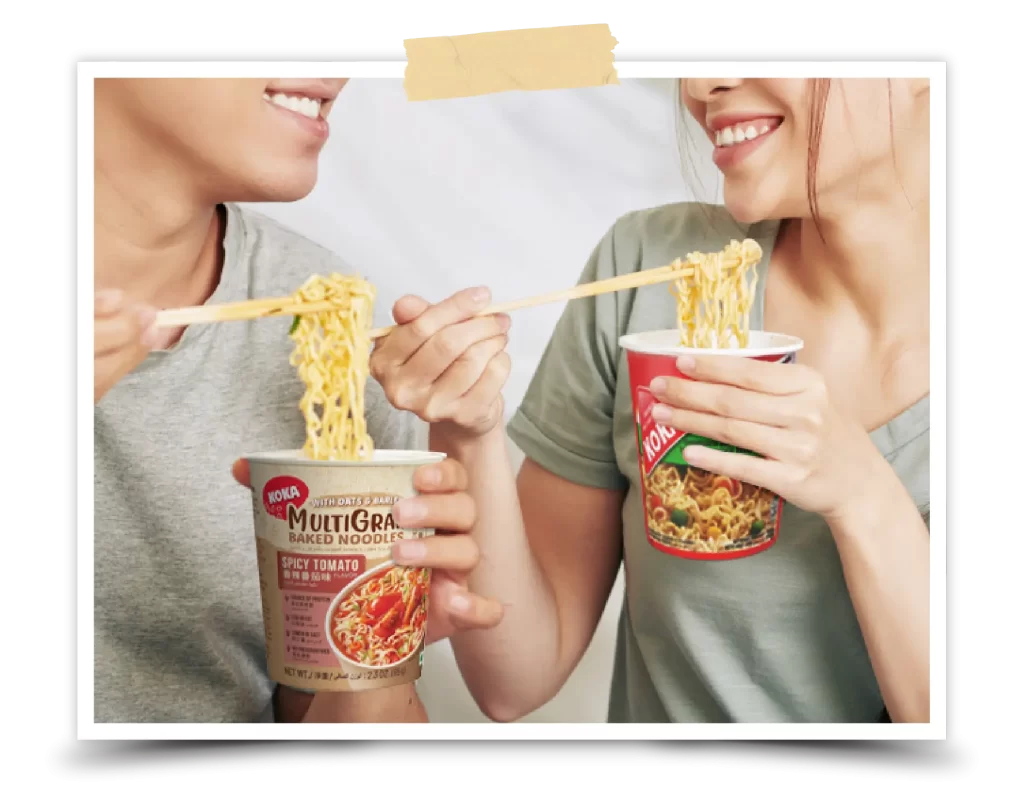
However, if you think instant noodles are just an Asian fixation, think again. They’re actually becoming increasingly popular among Western consumers today. Why? With frequent travel abroad, these consumers become more exposed to foreign food, instant noodles included. Meanwhile, ethnic food service outlets are mushrooming in most major European cities as well.
Here’s an interesting nugget: while Asia is home to the world’s largest instant noodles market, consumption worldwide has reached 100 billion servings per annum.
Can you imagine? More than 50 percent of the wheat consumption in the region goes into making these humble strands. Cup noodles now account for more than 60 percent of the instant noodle market. In fact, if you visit an Asian supermarket, you’ll notice that the instant noodle aisle is half-filled with these creations.
Many Asians choose instant noodles as the perfect mealtime option because they’re convenient, quick and easy to cook up, and they’re relatively cheap. Dried noodles can last a fairly long time without going bad, and most brands come with a huge array of flavours to choose from.
But perhaps best of all is that they’re highly customisable! You could add spring onions or fried shallots for that extra touch of flavour, or throw in your favourite vegetables and meats to turn your lunch or dinner into a wholesome meal. Or, you could spice it up with a dash of curry powder or dollop of sambal (a potent chili paste) for some added zing. In fact, you could stir-fry it, deep-fry it, bake it with cheese, or just keep it simple and savour it in a broth. It’s hard to get bored of eating instant noodles!
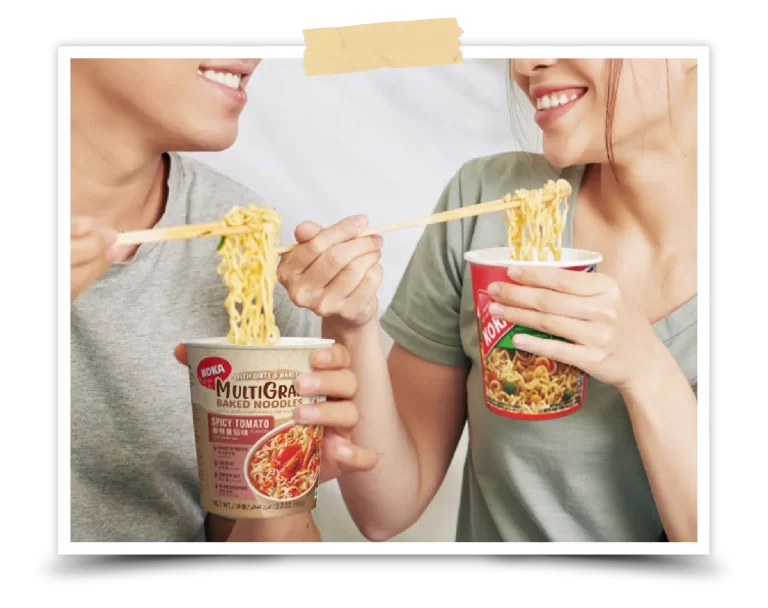
However, if you think instant noodles are just an Asian fixation, think again. They’re actually becoming increasingly popular among Western consumers today. Why? With frequent travel abroad, these consumers become more exposed to foreign food, instant noodles included. Meanwhile, ethnic food service outlets are mushrooming in most major European cities as well.
While Asians enjoy a great variety of noodles, cooked more than a dozen ways, there are easily four standouts that noodle lovers bring up without fail when they talk about their favourites.
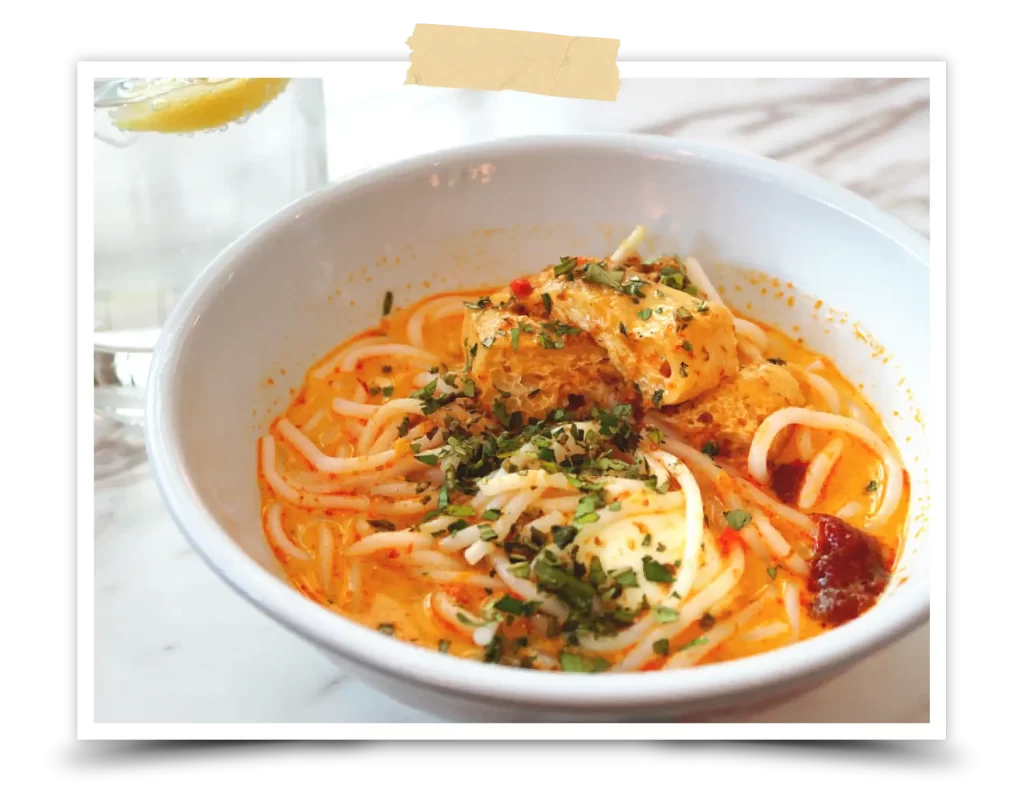
LAKSA
Unique to Singapore and Malaysia, Laksa is a spicy noodle soup that has a coconut curry broth base, bean curd puffs, bean sprouts, shrimp, cockles and slices of poached chicken. There are variations to this popular dish as you travel across Asia.

FRIED NOODLES
Fried Noodles (or Mi Goreng in Malay) features thin yellow noodles that have been stir-fried with a variety of meat, meatballs or seafood. It usually arrives glistening with oil and dark sauce, which is a sign that you’re in for a tasty treat.

PHO
Beef or Chicken Pho is an iconic Vietnamese soupy noodle dish that’s commonly eaten for breakfast along the streets of Vietnam. Its flavourful broth is made from bones and spices like onion, star anise, and cinnamon, and is served with a refreshing squeeze of lime juice, bean sprouts and herbs.
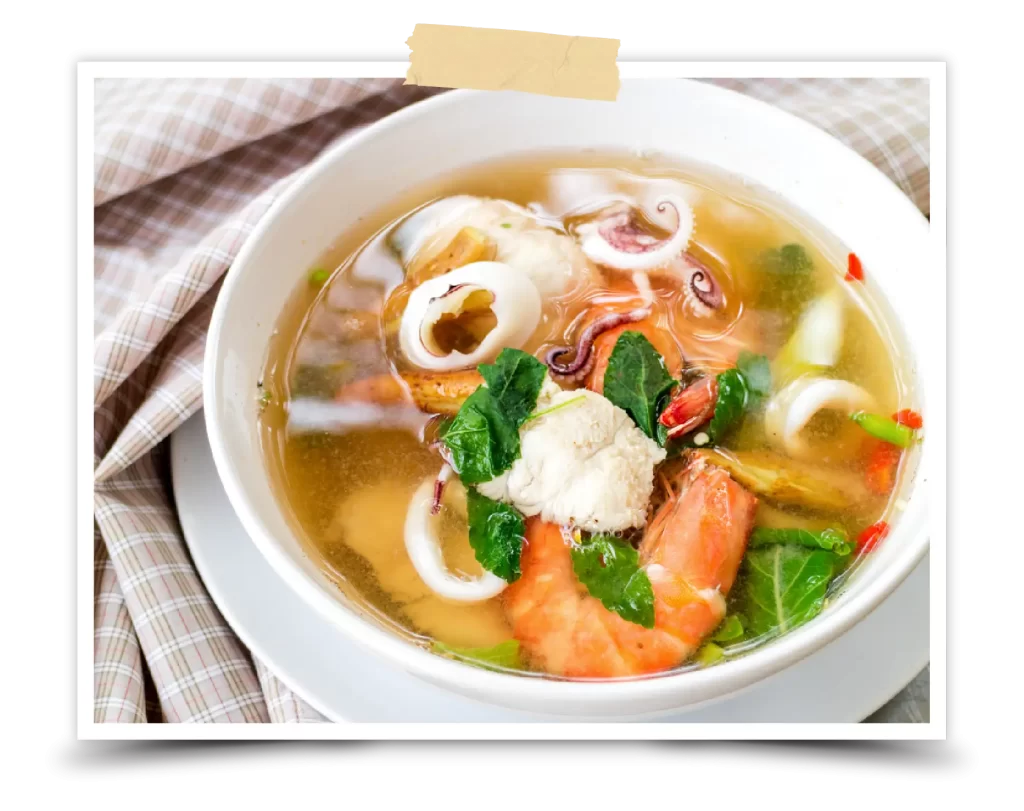
TOM YUM
Tom Yum is Thailand’s most famous soup. Cooked with seafood, it is aromatic and fiery hot, thanks to the inclusion of herbs and spices like chilies, lemongrass, galangal, and lime leaf. Served with noodles, this fiery and zesty combination is the perfect match for spice lovers.
While Asians enjoy a great variety of noodles, cooked more than a dozen ways, there are easily four standouts that noodle lovers bring up without fail when they talk about their favourites.
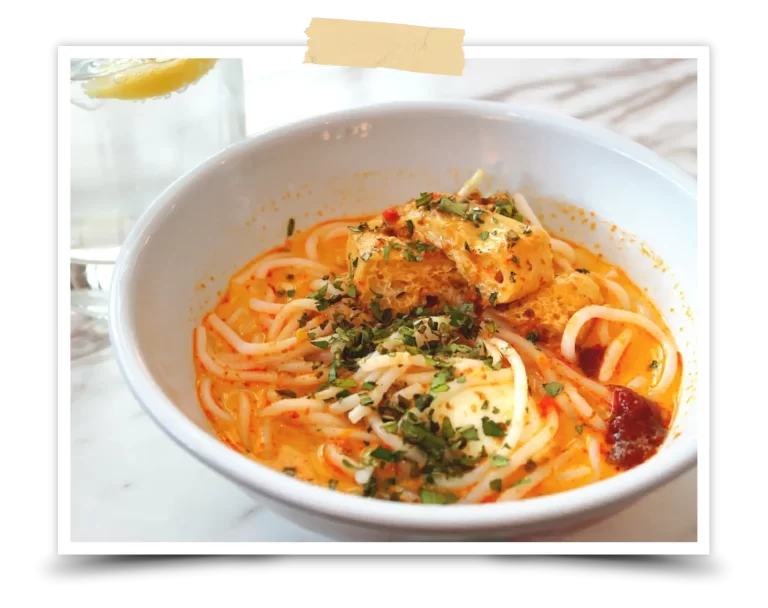
LAKSA
Unique to Singapore and Malaysia, Laksa is a spicy noodle soup that has a coconut curry broth base, bean curd puffs, bean sprouts, shrimp, cockles and slices of poached chicken. There are variations to this popular dish as you travel across Asia.
LAKSA
Unique to Singapore and Malaysia, Laksa is a spicy noodle soup that has a coconut curry broth base, bean curd puffs, bean sprouts, shrimp, cockles and slices of poached chicken. There are variations to this popular dish as you travel across Asia.
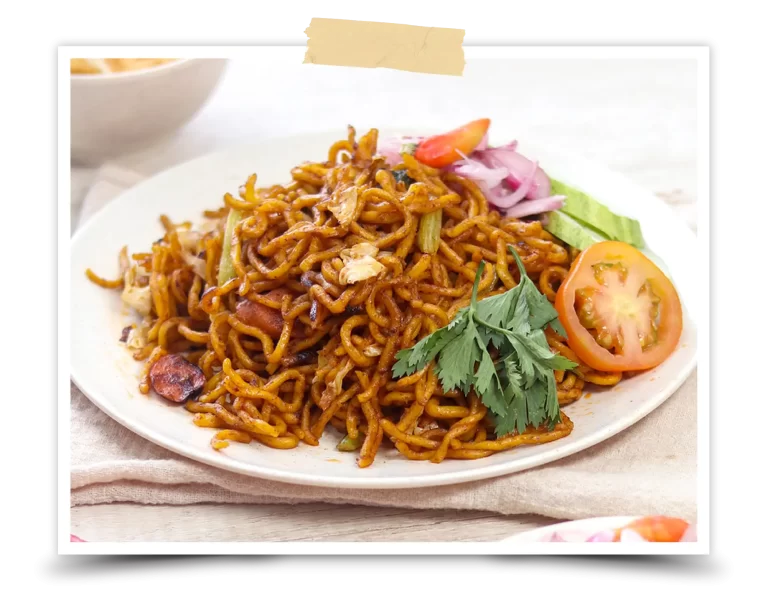
FRIED NOODLES
Fried Noodles (or Mi Goreng in Malay) features thin yellow noodles that have been stir-fried with a variety of meat, meatballs or seafood. It usually arrives glistening with oil and dark sauce, which is a sign that you’re in for a tasty treat.

PHO
Beef or Chicken Pho is an iconic Vietnamese soupy noodle dish that’s commonly eaten for breakfast along the streets of Vietnam. Its flavourful broth is made from bones and spices like onion, star anise, and cinnamon, and is served with a refreshing squeeze of lime juice, bean sprouts and herbs.
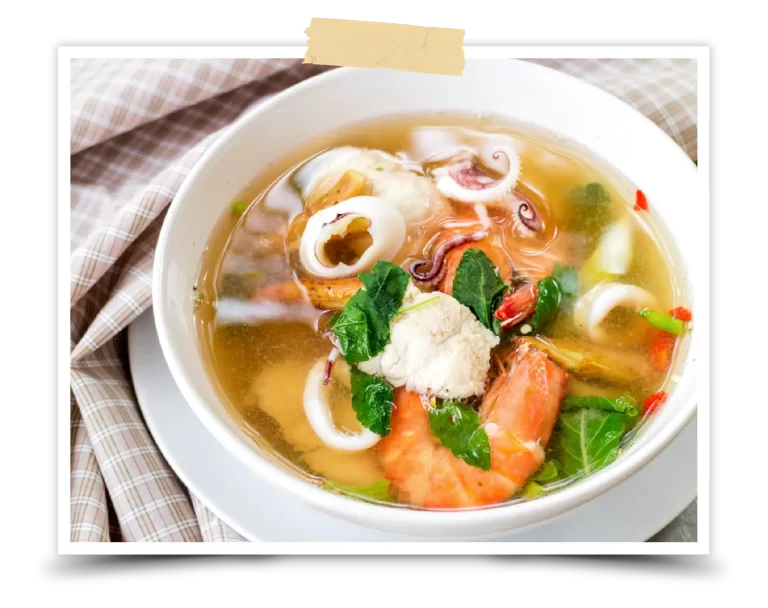
TOM YUM
Tom Yum is Thailand’s most famous soup. Cooked with seafood, it is aromatic and fiery hot, thanks to the inclusion of herbs and spices like chilies, lemongrass, galangal, and lime leaf. Served with noodles, this fiery and zesty combination is the perfect match for spice lovers.
This phrase has become a buzzword in the noodle world. It refers to the traditional art of making noodles in Shanghai, and involves holding the stretched-out noodle dough in both hands and whirling it around several times for good measure.
The dough is then laid out on a board, folded and refolded repeatedly. Eventually, with enough work, the dough is transformed into long, thin, noodles. Generally referred to as La Mian, these white, firm noodles have become popular in the last few years and lots of specialty La Mian restaurants have, in fact, sprouted all over the Republic. Like most noodles consumed across Asia, a bowl of La Mian is usually served dry or in a broth, with vegetables, egg or meats to make it a complete meal.
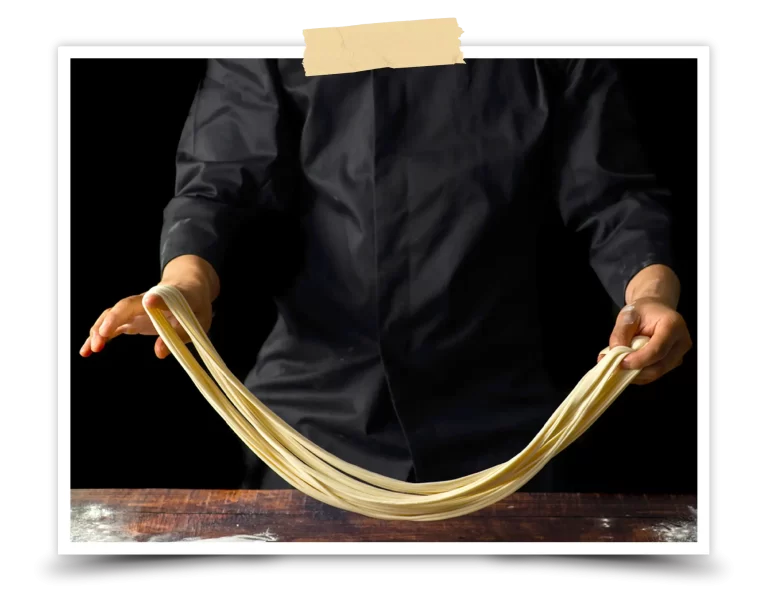

This phrase has become a buzzword in the noodle world. It refers to the traditional art of making noodles in Shanghai, and involves holding the stretched-out noodle dough in both hands and whirling it around several times for good measure.
The dough is then laid out on a board, folded and refolded repeatedly. Eventually, with enough work, the dough is transformed into long, thin, noodles. Generally referred to as La Mian, these white, firm noodles have become popular in the last few years and lots of specialty La Mian restaurants have, in fact, sprouted all over the Republic. Like most noodles consumed across Asia, a bowl of La Mian is usually served dry or in a broth, with vegetables, egg or meats to make it a complete meal.
